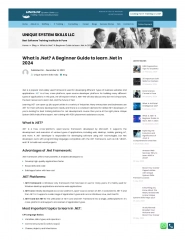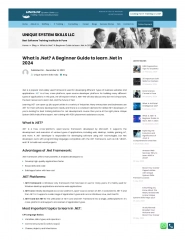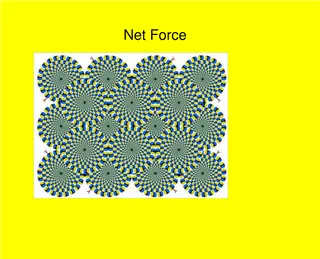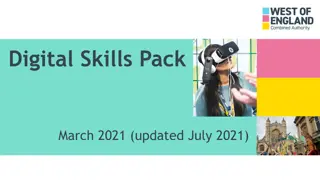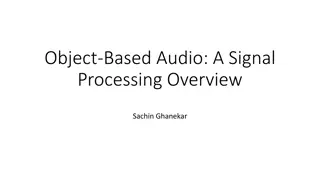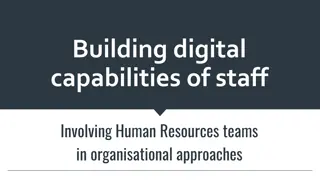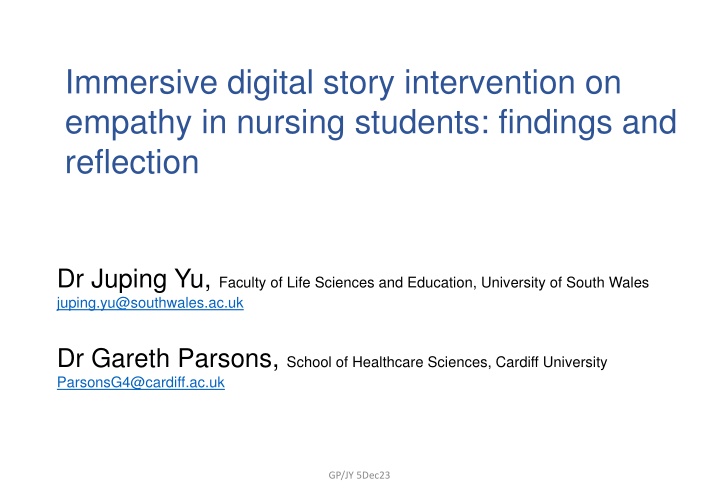
Exploring Empathy in Nursing Education: Findings and Reflection
Discover the insights and reflections from a research project on empathy in nursing students through immersive digital storytelling. The study examines the impact of an empathy intervention on 2nd-year Bachelor of Nursing students, aiming to enhance their empathy levels. Dive into the development of the "Walking in Their Shoes" project and explore the engaging Story Walk map designed to foster empathy among participants.
Download Presentation

Please find below an Image/Link to download the presentation.
The content on the website is provided AS IS for your information and personal use only. It may not be sold, licensed, or shared on other websites without obtaining consent from the author. If you encounter any issues during the download, it is possible that the publisher has removed the file from their server.
You are allowed to download the files provided on this website for personal or commercial use, subject to the condition that they are used lawfully. All files are the property of their respective owners.
The content on the website is provided AS IS for your information and personal use only. It may not be sold, licensed, or shared on other websites without obtaining consent from the author.
E N D
Presentation Transcript
Immersive digital story intervention on empathy in nursing students: findings and reflection Dr Juping Yu, Faculty of Life Sciences and Education, University of South Wales juping.yu@southwales.ac.uk Dr Gareth Parsons, School of Healthcare Sciences, Cardiff University ParsonsG4@cardiff.ac.uk 1 GP/JY 5Dec23
Objectives Objectives Present findings from the Walking in Their Shoes (WITS) research project around storytelling and empathy Reflection on the project Development of further research ideas 2 GP/JY 5Dec23
Development of the Walking in Their Shoes Development of the Walking in Their Shoes project project 3 GP/JY 5Dec23
Overview of the research (Phase 1) Overview of the research (Phase 1) Aim: to test the effects of the Walking in Their Shoes empathy intervention for nursing students Design: cluster randomised controlled trial Participants 2nd year Bachelor of Nursing (Adult) students (N=238) 3 cohorts of full-time students and 2 cohorts of part-time students Intervention: Lecture + Story Walk Control: Lecture only Outcome: Empathy level 4 GP/JY 5Dec23
Walking in their Shoes - Story Walk map 3. Diagnosis / consultant room 2. Letter / outpatient reception 6. Talking / corridor 1. Arriving / entrance 7. Toilet / ward 9. Leaving / exit 8. Waiting / seating area 5. Beep / ward 4. Surgery / ward 5 GP/JY 5Dec23
6 GP/JY 5Dec23
Participant information (N=238) Participant information (N=238) Variables Grouping Control group Intervention group Total < 21 21-30 31-40 41-60 Male Female White Other Yes No Yes No 21 (15.2) 65 (47.1) 28 (20.3) 22 (15.9) 14 (10.1) 124 (89.9) 125 (92.6) 10 (7.4) 88 (65.2) 47 (34.8) 101 (74.8) 34 (25.2) 12 (12.0) 42 (42.0) 30 (30.0) 13 (13.0) 5 (5.0) 95 (95.0) 88 (92.6) 7 (7.4) 74 (77.9) 21 (22.1) 75 (78.9) 20 (21.1) 33 (14.2) 107 (45.9) 58 (24.9) 35 (15.0) 19 (8.0) 219 (92.0) 213 (92.6) 17 (7.4) 162 (70.4) 68 (29.6) 176 (76.5) 54 (23.5) Age (years) Gender Ethnicity Previous care experience Current care experience 7 GP/JY 5Dec23
Data collection and analysis Data collection and analysis Data collection: three times (pre-test; post-test; follow- up) between May 2018 and December 2019 Jefferson Scale of Empathy (20 items; 7-point Likert Scale) Descriptive statistics: means, frequencies, and percentages Inferential statistics: Mixed between-within units Analysis of Variance (ANOVA) on empathy scores; Transformations and permutation tests; Post-hoc multiple comparison tests 8 GP/JY 5Dec23
Results Results Empathy scores: time by group 120 118.76 Empathy scores 118 116 114.83 114 114.6 113.66 112.13 112 111.97 110 Time 108 Pre-test Post-test Follow-up Control group Intervention group 9 GP/JY 5Dec23
Yu J, Parsons GS, Lancastle D, Tonkin ET, Ganesh S (2021) "Walking in Their Shoes": The effects of an immersive digital story intervention on empathy in nursing students. Nursing Open. 8(5):2813-2823. Yu J, Ganesh S, Lancastle D (2023) Psychometric evaluation of the Jefferson Scale of Empathy in a sample of nursing students in the United Kingdom. Nursing Open. In press 10
Conclusion (Phase 1) Conclusion (Phase 1) Immediate increase in empathy in nursing students in the intervention group compared to those in the control group The increase wasn t sustained over time (3 months) The need for reviewing and redesigning the intervention to sustain improvement 11 GP/JY 5Dec23
Fidelity evaluation Fidelity evaluation Involves five key elements: 1. adherence 2. exposure 3. quality of delivery 4. participant responsiveness 5. programme differentiation Carroll C, Patterson M, Wood S, Booth A, Rick J & Balain S (2007) A conceptual framework for implementation fidelity. Implementation Science, 2(1):40. 12 GP/JY 5Dec23
Fidelity evaluation: design Fidelity evaluation: design Students were organised into small groups and each group was guided by a student leader for the Story Walk in USW clinic simulation centre. Student leaders received instructions and a copy of the map and guided other students in their groups for the Story Walk along the desired path. All students had a feedback sheet listing each clip by name and number and were asked to write down What grabs your attention mostly as you listen to each clip? 139 feedback sheets were evaluated to check whether students entered anything against each clip and to evaluate the quality of the students feedback. 13 GP/JY 5Dec23
1. Adherence 1. Adherence Refers to content, coverage, frequency and duration In this study, content of the video clips and frequency (number of clips) remained constant. Each group left at 10-minute intervals to start the Story Walk. Feedback sheets were evaluated to check whether students had entered information against each clip. Retrospective analysis of feedback data For the purposes of this study, absence of entry is viewed as non-adherence to the study protocol. We relied upon participants note making, but not observation 14 GP/JY 5Dec23
Adherence by clip Adherence by clip Clip Count 1 2 3 4 5 6 7 8 9 133 133 134 133 139 135 133 131 133 97.73 97.73 98.48 97.73 99.24 96.21 98.484 97.73 97.73 % Overall adherence was 96.24% This was evenly distributed across all clips, showing that most participants listened to each clip 15 GP/JY 5Dec23
2. Exposure 2. Exposure Equates to drug dosage In the Story Walk, we have equated exposure to how students were guided to each location and the time taken at each location. We did not measure the exact time taken by each group for their Story Walk, although we did ensure that each group started the Story Walk at 10-minute intervals and that it took around 30-minutes to complete the Story Walk Each group leader confirmed that all nine locations were visited by his/her group. 16 GP/JY 5Dec23
3. Quality of delivery 3. Quality of delivery Refers to the way the intervention was delivered Prior to each run of Story Walk, we ensured that all signs containing the clips were correctly located. All student leaders had the same instructions from two of the research team (GP and JY). The same Story Walk map was provided to each group leader. All students received the same feedback sheet at the beginning of the Story Walk. 17 GP/JY 5Dec23
4. Participant responsiveness 4. Participant responsiveness Measures participants engagement with an intervention, also known as reaction evaluation In this intervention where we expect participants to be engaged with the Story Walk, the degree of reaction to each clip is important and may indicate the degree of connection with the story and thus have an impact on the degree, durability and nature of empathy elicited. 18 GP/JY 5Dec23
Participant responsiveness (each clip) Participant responsiveness (each clip) 0 1 no comment short description - briefly describes aspect of clip long description - detailed description of event but does not comment on thoughts and feelings 2 connected - comments on Libby's thoughts and feelings beyond what is described in the clip 3 Each feedback sheet was graded by a member of the research team (GP). A sample were independently graded by two other team members (JY and ET) and grades adjusted. 19 GP/JY 5Dec23
Examples of coding (1) Examples of coding (1) Clip 1 Arriving at hospital Score Notes on participant feedback sheet 1 Anxiety 2 Walks through main entrance, not relaxed, nervous, worrying about dates 3 Patient is anxious about going into hospital. Every time she feels edgy and how feeling this doesn t change 20 GP/JY 5Dec23
Examples of coding (2) Examples of coding (2) Clip 4 Surgery/Ward Score Participant notes on worksheet 1 Emotional No sleep night before 2 The anxiety the night before, distress she felt whilst on trolley going to theatre, relief at not having a colostomy 3 How upset and alone she felt after hearing what could happen (consent process), being on her own, feeling angry with staff for talking among themselves and not giving her attention. Upset in tears, felt like she was on her own, relieved at not having a colostomy but annoyed with staff (talking to each other) felt isolated and small. GP/JY 5Dec23 21
Participant responsiveness (all clips) Participant responsiveness (all clips) 0 1 no comment short description - briefly describes aspect of clip long description - detailed description of event but does not comment on thoughts and feelings 2 connected - comments on Libby's thoughts and feelings beyond what is described in the clip 3 While almost all participants commented on each clip, the degree of connection was weak with only 20.54% written words indicating an emotional connection with Liby s story. 22 GP/JY 5Dec23
5. Programme differentiation 5. Programme differentiation Refers to differences in delivery between each group This was controlled by location and time. oEach Story Walk took place in the same clinical simulation centre. oAll participants had sufficient time to take part in the Story Walk as scheduled teaching and learning in their programme of study. 23 GP/JY 5Dec23
Study redesign Study redesign Problem 1. Evidence of immediate impact on empathy, but not sustained 2. Good adherence to protocol, but poor responsiveness Only one fifth of participants showed a good connection to Liby s story in their note making 24 GP/JY 5Dec23
Solution? Solution? Improve engagement through applying: Level of Processing theory (Craig & Lockheart 1972) oThe level of mental processing through deeper analysis to enable more elaborate, longer-lasting and stronger memory recall Theory of Mind (Premack & Woodruff 1978) oThe ability to understand and take into account of another person s mental state. oEngage participants in deeper reflection that encourages identification with Libby and her story will provide opportunities for connection. GP/JY 5Dec23 25
Improve connection through deeper Improve connection through deeper reflection reflection Used USW Clinical Simulation Reflection Form (adapted by a colleague BJ 7/4/22) Adapted from Husebo SE et al. (2015) Reflective practice and its role in simulation. Clinical Simulation in Nursing 11(8):368-375. Empathy domains were used to shape questions based upon: Batson CD (2009) These Things Called Empathy: Eight related but distinct phenomena. in Decety, J and Icke, W. (ed) The Social Neuroscience of Empathy, The MIT Press 26 GP/JY 5Dec23
Empathy reflections Empathy reflections Based upon Batson (2009) These things called empathy , questions were devised to encourage reflexivity across the following areas or phenomena. 1. understanding thoughts and feelings 2. being caught up in the event 3. putting yourself in their shoes 4. feeling vicariously 5. recognising similar situations 6. generalising ideas to other contexts 7. motivation or intention to act 27 GP/JY 5Dec23
Reflection on Libbys story Reflection on Libby s story Describe Libby s story walk. How did the story walk unfold? Describe Libby s story walk. How did the story walk unfold? What were you asked to do? What were you asked to do? Did you have any problems following the story walk? Did you Did you have any problems following the story walk? Did you visit every station, and could you hear Libby s story? visit every station, and could you hear Libby s story? Can you describe the thoughts and feelings Libby had as her Can you describe the thoughts and feelings Libby had as her story progressed? What do you think she is thinking and story progressed? What do you think she is thinking and feeling based upon what Libby said and her actions? feeling based upon what Libby said and her actions? Is there a particular part of the story that stands out for you? Is there a particular part of the story that stands out for you? Was there a station where you found yourself caught up in Was there a station where you found yourself caught up in what was happening to Libby or her description of events? what was happening to Libby or her description of events? If you were in Libby s shoes, how would you feel when faced If you were in Libby s shoes, how would you feel when faced with her situation? Do you think your story would be like with her situation? Do you think your story would be like Libby s, if so, why is this? Libby s, if so, why is this? If not, how would your story differ? If not, how would your story differ? Fidelity of the Fidelity of the simulation simulation Fidelity of the Fidelity of the simulation simulation Understanding thoughts and feelings Being caught up in the event Putting yourself in their shoes 28 GP/JY 5Dec23
Was there anything you found upsetting or distressing in Libby s story? If so, what was this? Do you think that Libby s experience is a typical one for patients to go through? If so, why do you think this? Feeling vicariously Recognising similar situations If you do not think that is typical, then how do you think or feel that it differs from experiences you have encountered? What have you learnt from following Libby s story? Generalising ideas to other contexts Motivation or intention to act Will you use what you have learned from this experience in the future? If so, what is it that you intend to do? GP/JY 5Dec23 29
References References Batson CD (2009) These Things Called Empathy: Eight related but distinct phenomena. in Decety, J and Icke, W. (ed) The Social Neuroscience of Empathy, The MIT Press Carroll C, Patterson M, Wood S, Booth A, Rick J & Balain S (2007) A conceptual framework for implementation fidelity. Implementation Science, 2(1): 40. Craik FIM Lockhart RS (1972) Level of processing: A framework for memory research. Journal of Verbal Learning and Verbal Behavior, 11: 671-684. Husebo SE, O Regan S & Nestel D (2015) Reflective practice and its role in simulation. Clinical Simulation in Nursing, 11(8):368-375. Premack D & Woodruff G (1978) Does the chimpanzee have a theory of mind? Behavioral and Brain Sciences, 1(4):515-526. Yu J, Ganesh S & Lancastle D (2023) Psychometric evaluation of the Jefferson Scale of Empathy in a sample of nursing students in the United Kingdom. Nursing Open, In press Yu J, Parsons GS, Lancastle D, Tonkin ET & Ganesh S (2021) "Walking in Their Shoes": The effects of an immersive digital story intervention on empathy in nursing students. Nursing Open, 8(5):2813-2823. GP/JY 5Dec23 30
GP/JY 5Dec23 31

